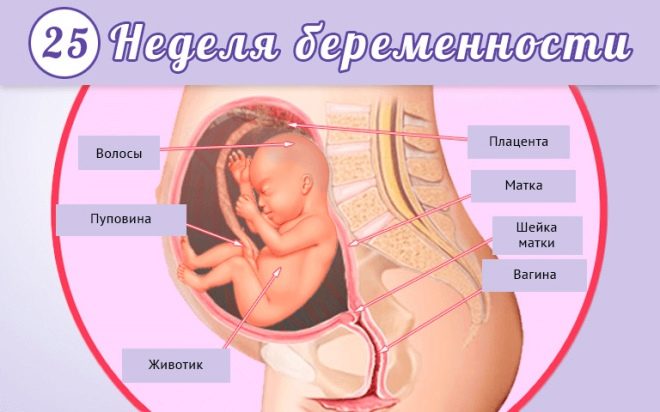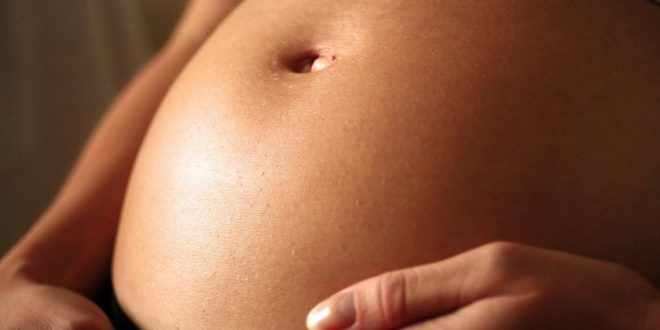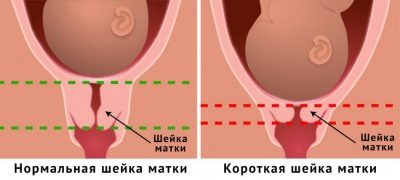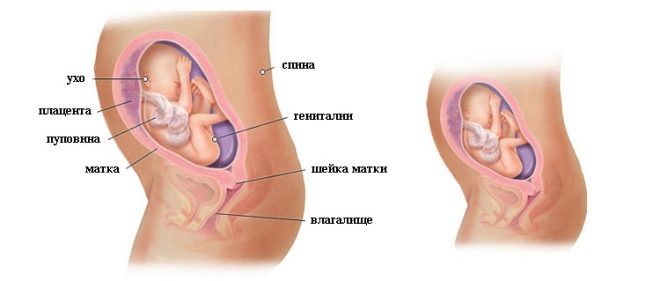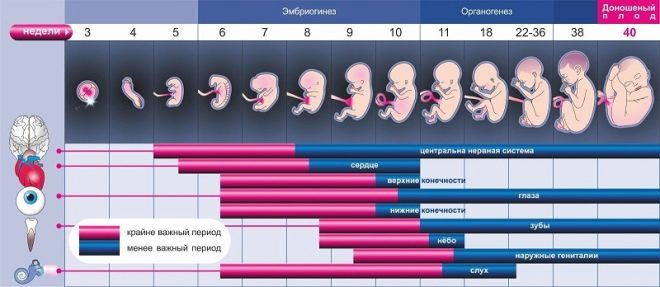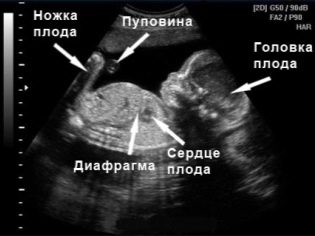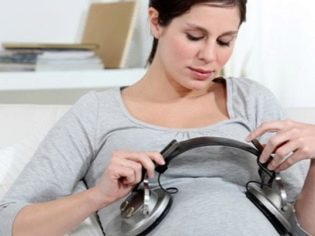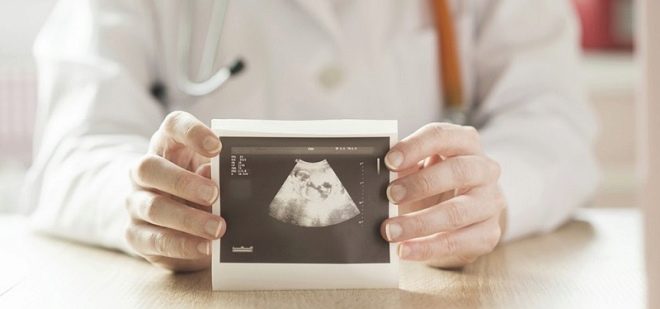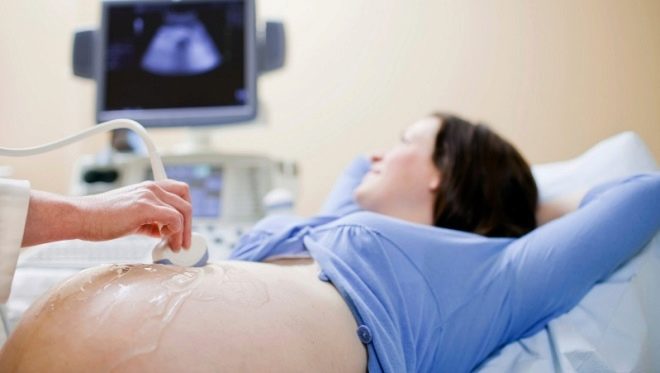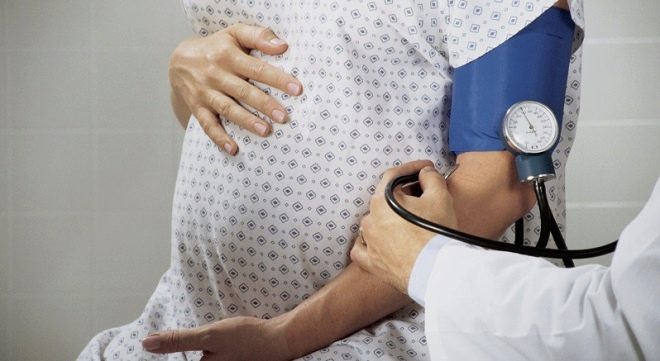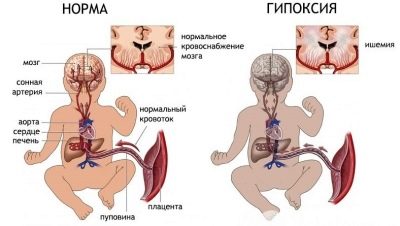25 week of pregnancy: what happens to the fetus and the expectant mother?
At 25 weeks of gestation, the woman’s condition begins to change. Just yesterday everything seemed easy and simple, the expectant mother was quite mobile and mobile, and already a few days later she increasingly complains of pain, fatigue and begins to dream about the upcoming maternity leave. Why this happens and what is more remarkable about the 25th week, we will tell in this article.
How many months is it
25 week of pregnancy is one of the final in the second trimester. After week 26, the third trimester will start - “the finish line” on the way to the long-awaited meeting with the baby. In the meantime, the penultimate week of the second third of the gestation period is taking place, according to the calendar standards, sixth month, and obstetric standards began the seventh month of pregnancy, and this week in it - the first.
Such a difference is due to the fact that the usual calendar has 9 months in pregnancy, and the lunar (obstetric) calendar - 10. In each obstetric month exactly 4 weeks, whereas in the calendar month it can be from 28 to 31 days.
The beginning of the 25th week means that the 23rd week has gone from the moment of conception, and the delay of the menses began almost 21 weeks ago. There is still quite a long time before delivery - almost 15 weeks, and the 24-25 week, which will be discussed, is in its own way a “turning point”.
Feelings of a woman
Habitual everyday affairs begin to bore the future mother. It is already difficult for her to stand at the stove for a long time, to sit in the workplace or at lectures at the university. The more kilograms she managed to gain by this week, the more noticeable the deterioration of her condition.
Externally, she may not show the view, but many pregnant women alone begin to dream of not having to get up in the morning after the wake-up call. 25th Obstetric Week begins gradually, gradually “showing” to the expectant mother the other sides of the “interesting situation” - not the most pleasant. Everything that is happening with the mother is directly related to the pace of development of her baby.
Stirrings
The kid actively accumulates fat and muscle mass, grows, so it is quite natural that his movements are becoming more and more tangible for the mother. By the beginning of the 25th week, women are already well adapted to these feelings, because many, especially during the second or third pregnancy, have been feeling the activity of their offspring for the past one and a half months. And by the beginning of the seventh obstetric month, primiparous women are already completely “accustomed” and clearly feel their baby.
The movements on this period are regular. However, it is not necessary to count them yet, it is recommended by doctors to do it since the 28th week of pregnancy. In the meantime, it is enough to mentally record the facts of the commission of a coup or other movement. Very active, restless movements for several hours may indicate that the crumb is in discomfort. Anxiety is also considered a lack of movement throughout the day.
Increases the activity of kids gradually.The current date is considered the beginning of the peak of activity, now up to 32 weeks the baby will noticeably kick and push the mother, wake her in the middle of the night, and the future father will already be able to feel his movement if he puts his hand on his wife’s belly. After 32 weeks there will be less room for movement in the uterus, and aktivnichat son or daughter will be less.
Do not assume that the life of the baby in the womb is different from the mother. A woman and her child are inextricably linked. And it's not so much about the umbilical cord and the placenta, but about the emotional connection. The baby begins to move more actively, if the mother is joyful and contented, and can subside and hide, if she feels sad, she quarreled with someone, she feels bad.
Negative emotions cause an increased production of stress hormones, their baby receives with maternal blood. Positive emotions stimulate the production of endorphins - the hormones of happiness and pleasure. Their pussy also gets from mom. Therefore, a common emotional background unites, and A woman now needs to listen carefully to the movements of her baby in order to establish that same invisible contact with him.
At night, the movements of the woman are felt brighter and more clearly, this is due to the fact that she relaxes and the sensitivity increases. Babies behave more calmly during the day, as a woman walks, does something, moves, and the uniform motion sickness that occurs when she walks, acts on the baby just as it does on newborns - soothingly.
Do not forget that all people are unique. At the 25th week of pregnancy, the baby can quite well show its temperament: some puzozhiteli are now more active, while others are calmer, and their movements are felt somewhat less frequently.
Pains
A variety of pain in this period is nothing but a smooth and gradual preparation of the female body for childbirth, as well as its adaptation to new physiological conditions of existence. There is also a certain regularity: the more extra pounds a woman has gained, the stronger the discomfort associated with late pregnancy will be stronger.
At the 25th obstetric week, women are already experiencing certain inconveniences, bearing double or triplet, as well as future mothers who wear under the heart of a large baby. The growing uterus causes overstretching of the ligamentous apparatus, the displacement of the center of gravity, it becomes difficult to wear the tummy.
Muscles strain, ligaments become denser and thicker, this can cause aching pain in the lower back. The loin and the back hurt mainly in the late afternoon, after a busy day with activities and movement. However, these pains do not have a permanent character, do not increase, do not increase.
If the lower back pulls hard, pain becomes stronger, despite the fact that the woman lay down and took a warm shower, you should call an "ambulance": it is possible that preterm labor begins.
Sprains often cause tingling in the right or left side, as well as a feeling of aching in the sacrum. For many women, the pubic bone begins to hurt this week. Such pains are not constantly felt, but only when the expectant mother turns over from side to side, sits down from a lying position, climbs the stairs. The bones of the pelvis begin to disperse, soften, become more mobile. This is necessary so that they can release the baby when the time comes for his birth.
Now a woman needs to be extremely attentive: if the pain in the pubic pains, becomes unbearable, if they begin to interfere with normal movements, the woman cannot sit and stand painlessly, you should contact your doctor, and also visit the orthopedist to rule out symphysitis - an unpleasant disease in which delivery is often carried out by caesarean section.
Headaches, which were quite natural in the first trimester, can now be symptoms of rather dangerous complications. For example, hypertension or hypotension.
If the head hurts every day, the pain itself is quite intense, the woman is prescribed strict control over the level of blood pressure. It is measured on two hands in turn. With an increase or with a significant decrease, you must notify the doctor.
The legs are now sore and aching due to the increased weight of the woman, because the body simply does not have time to compensate for the load that is growing every day.
In addition to aches in the joints, symptoms of varicose veins may appear, because the uterus severely squeezes the lower hollow veins and disrupts normal blood circulation. Wearing special anti-varicose stockings will help avoid such a dangerous and unpleasant pregnancy complication.
Allotment
The amount of discharge in the 25th obstetric week continues to increase gradually. And there is no hint of pathology in this, since a large amount of vaginal secretion is now necessary for the microflora of the genital tract to remain normal.
In order not to suffer from the feeling of constant moisture in the perineum, a woman needs to use thin sanitary pads, as well as to monitor the cleanliness of the genital organs, because the vaginal secretion is a favorable environment for the reproduction of disease-causing bacteria.
Expectant mother need to know that normal in this period are the discharge, which have a light color and do not have an unpleasant smell. Minor sour milk smell is acceptable. Any other changes in the nature of vaginal secretions should be alerted.
Pay attention to the pink, cream, beige, brown discharge. All of them are varieties of blood discharge and can speak both about the pathology of the cervix uterus and about problems with the placenta.
Mucous discharge with blood is often a sign of discharge of mucus plug from the cervical canal and the onset of preterm labor.
If the discharge has changed its normal color to green, brown or gray, this may indicate a bacterial infection. White discharge, accompanied by a bloom on the genitals of white, is a fungal infection. White discharge resembling cottage cheese in its structure is a thrush that is common among expectant mothers.
Healthy and normal discharge, even if they are quite abundant, is never accompanied by itching, unpleasant smell.. This is not the case for secretions that occur in genital tract infections. Blood and water secretions are now considered the most dangerous because they can talk about placental abruption or discharge of water.
The more carefully a woman will monitor her discharge, the sooner she will be able to detect changes. It is not worth delaying in this case: the infection needs treatment, and the threat of premature birth, if the water and the placenta are not removed, is removed by means of medications.
You can prolong the pregnancy with the help of "Duphaston", "Utrozhestan." These drugs are prescribed by the doctor in the dosage that this woman needs.
Pregnant women should be warned against wearing tampons. Their introduction increases the likelihood of infection in the genital tract, and stagnation of vaginal secretions inside the vagina increases the likelihood of inflammation. Now only gaskets are allowed.
The mood of the future mother
As well as physical sensations, psychological also begin to change. More recently, a woman was in euphoria, everything around her seemed beautiful and amazing, and her own position was perceived as a miracle. From week 25, the mood of the pregnant woman becomes unstable again. But now not progesterone and hCG are guilty of this instability, as in the early stages, but new physical sensations.
Very often at that time a woman standing at the mirror comes to the conclusion that she no longer has a waist, and her walk makes her look like a penguin.This raises concerns for the relationship with her husband. Psychologists say that it is not necessary to worry: mentally normal men like this female helplessness, they begin to feel the need to protect and protect the mother of their future children. It `s naturally.
Many women at this time begin to think about the upcoming delivery, and this instills fear in them. If a woman is impressionable and disturbing, then this fear can be so strong that you can’t think about anything else. To avoid the development of neurosis in pregnant women, experts recommend contacting psychologists for help or talking to your doctor, who will tell you how birth is going on and what methods of anesthesia are used today.
Now a woman can again become whiny and irritable. Households should understand her feelings and fears, give her more attention, help around the house, support her. For pregnant women in all women's clinics, there are free psychological help rooms where, if necessary, you can come with your husband.
All over the world, psychological problems of pregnant women are decided to be solved with the help of specialists, while Russians are not used to this, but there is already a tendency to improvement: according to statistics from the Ministry of Health, psychologist’s offices in women's consultations in the country in recent years have visited about 35% of future mothers gestation.
Changes in the body
In the body of a pregnant woman in this period proceeds a lot of invisible and obvious changes. It begins the production of the hormone - relaxin, under the action of which tendons and ligaments, pelvic bones become more mobile and softer. The amount of melatonin pigment increases, and because of this moles and freckles become brighter, there may even appear pigment spots. But the main changes are happening with the belly of the future mother.
Uterus growth
The uterus has grown so much that it is very close to the lower line of the breast and props up from the bottom. The height of the bottom standing (this is wider, upper part) of the uterus at this period is 23-27 centimeters. A woman feels the uterus not only when bending or changing body position, but also in a calm state.
The uterus is located in the abdominal cavity, occupying almost 70% of its internal area. The internal organs are “pushed aside” and pressed. The location of the main female reproductive organ allows the woman to independently determine its boundaries quite easily, as well as changes in the state of smooth muscles. The tone of the uterus is now noticeable to the touch: the stomach is strained, it becomes more rigid.
The shape of the uterus has changed, now it is not oval and not round, as it was before, but incorrect, repeating the shape of the fetal bladder. Soon she will be tightly wrapped around the baby from all sides, while he still has free space for movement. The length of the cervix in the norm is 35-45 mm, a shorter cervix poses a threat to preterm labor and necessarily needs medical advice and assistance.
Weight gain
By this week, all women pay attention to the fact that weight gain becomes more intense. There is nothing strange in this, because now the baby is actively gaining its weight, and, in fact, two are weighed. The amount of amniotic fluid increases, the placenta becomes more severe, and the amount of blood in the woman’s body also increases.
Most expectant mothers have an excellent appetite at obstetric week, you want to eat all the time, and if you do not limit your desires, you can get quite a lot by this time. The rate of increase depends on how was the weight of the woman before pregnancy.
- Thin mummies by this date should normally gain about 8.5 pounds.
- If a woman had a normal weight before pregnancy, her increase by this week should not be more than 7.5 kilograms.
- Women with overweight and obesity by the 25th week can gain no more than 4.5 kilograms.
Significant excess of these norms is a consequence of either malnutrition or beginning gestosis. With internal edema, weight grows pathologically, and visually no swelling is visible. In any case, you should consult with your doctor. If preeclampsia is not detected, the doctor will recommend a special diet to normalize weight.
Extra pounds are very hard to wear in the third trimester, they complicate childbirth and make the process of postnatal recovery for women longer and protracted. And all the ladies know exactly how difficult it is then to get rid of the extra 15-20 kilograms to become slim, desirable and beautiful again.
Chest
The mammary glands will no longer undergo significant changes until the very birth. They actively grew in the first trimester, which was accompanied by pain, burning, itching. Now the sensations in the chest are calmer, because the processes that take place are hardly noticeable. Now the mammary gland ducts are “tuning” for the upcoming breastfeeding - they are expanding.
In multiparous colostrum may begin to secrete. In women who are waiting for the firstborn, the nipples are stronger, and the ducts are narrower, they may not have colostrum. Squeeze the colostrum is not necessary. It is enough to wash the breast two or three times a day with warm water to prevent the penetration of the infection, because colostrum is a highly nourishing environment, which is very fond of disease-causing bacteria.
At 25 weeks, some women are surprised to note that there is no sensation in their breasts, this is a matter of concern for them about the upcoming lactation. Experts assure that there is no reason for fear: chest pain during pregnancy and subsequent lactation are not interrelated.
The skin of the breast is now subject to stretching, and so that later the mammary glands are not covered with ugly stretch marks, now we need to take measures to prevent stretch marks.
It is important to use only hypoallergenic cosmetics, baby cream, as well as wear a good supporting bra with cups and wide straps.
Training bouts
Among future mothers there is an opinion that once these contractions are called training, they should appear immediately before the birth. But this is a common misconception. At the 25th week of pregnancy, training bouts may well begin and will not be considered something pathological.
False contractions or Braxton Hicks contractions manifest themselves in the brief sudden tension of the smooth muscles of the uterus. At this time they are irregular, they do not appear every day.
By themselves, false contractions do not lead to smoothing and dilation of the cervix. They deliver more psychological discomfort than physical, they quickly pass if a woman lies down, relaxes, rests, or takes a warm shower.
The mechanism and purpose of false labor science is not fully known. It is believed that they, along with the production of relaxin, the divergence of the pelvic bones are certain stages of preparing the body for childbirth.
Previously women who have given birth, training bouts usually appear closer to childbirth, and in nulliparous women they can “start” in advance. There are women who didn’t have training clashes at all, either in the first birth or in the second, and this didn’t prevent them from giving birth to their children quite normally.
Other changes
The skin of a pregnant woman at 25 weeks becomes drier, increases the risk of infection, an allergic reaction. Therefore, any experiments with cosmetics, means for massage, as well as sunbathing is contraindicated. At the current time you should not visit the solarium and sunbathe for a long time under the open sun.
The diligent work of the sweat glands during this period becomes the cause of excessive sweating. It is especially difficult for women who are carrying a baby in the summer. Survive this period will help properly selected clothing and personal hygiene. Synthetic fabrics should be avoided.
Women at 25 week often feel dizzy. This is due to the increased amount of blood circulating in the body. For the same reason, a blush is often on the cheeks of a pregnant woman.
Even if the pregnancy proceeds without complications, one should not forget about the probability of losing consciousness, fainting and getting injured. Therefore, you need to walk carefully without making sudden movements, not to abuse physical exertion.
The growth of the uterus on this period becomes the cause of many changes in the work of the internal organs. Thus, a squeezed bowel cannot fully function, resulting in constipation, less often diarrhea.
Due to constipation and compression of hemorrhoidal veins, hemorrhoids can develop. Because of the mechanical impact on the bottom of the stomach, the growing uterus starts heartburn, and because of its pressure on the bladder, women complain of frequent urination.
At week 25, women often have disturbed sleep, as it becomes more difficult to choose a position that is comfortable for a night's rest. Increasingly at night you have to get up to the toilet for a small need. Because of this, during the day a woman may feel somewhat lethargic and tired.
Fetal development
Less and less your child fits under some standards and more and more becomes like himself. This week, the changes in it are not as big as every week in the embryonic period, but the processes that are now taking place in the children's organism are very important. Now a fully formed organism of the crumbs must learn the main thing - the ability to survive in a world that is significantly different from the mother's womb.
At 25 weeks old baby is about 33 centimeters tall. (from the tailbone to the top of the KTR is about 28-29 centimeters), and its average weight is 700 grams. Already, there are children, whose weight is about 800 grams, and there are kids who barely make up to 600 grams.
The closer to childbirth, the more differences can be found between babies. The embryos were all about the same, and therefore their size on the ultrasound was calculated and compared with the norm to the nearest millimeter. Now mothers have big and tiny, tall and short stunted children, fat girls and thin ones. They are as different as adults.
Appearance
The baby continues to accumulate subcutaneous fat, which makes the skin more elastic. Deep folds, which not so long ago covered the body and face, making the crumbs look like dried fruit, are smoothed, there are cheeks, cute roundness on the arms and legs.
Subcutaneous fatty tissue is growing quite slowly, and therefore the appearance of the baby is changing now, too, at a slow pace, but this happens every second.
The skin of the baby in the 25th week acquire melanin pigment, and the skin becomes slightly yellowish. Previously, it was saturated red, but the subcutaneous fat removed the grid of blood vessels from the outer layers, and now the skin has a pink tint, almost as it will be at the moment of birth of the baby to the light.
The face of the baby is fully formed, like the neck and the ears. The auricles are very soft, since the cartilage tissue becomes durable later than the bone.
According to the degree of softness of the ears, in the case of preterm birth, doctors judge the maturity of the baby. The more mature he is, the harder his ears are. There are nails on the fingers, individual patterns that form fingerprints “flaunt” on the finger-pads.
The body of the baby is thickly covered with cheese-like lubricant. Her task is to protect the skin. The grease is retained by thin translucent hairs - lanugo. The baby has already started to get rid of lanugo, the hairs fall out, and along with them the amount of cheese-like lubricant decreases.
Closer to childbirth in normal lanugo disappears completely or it remains a small amount, and the lubricant remains only where it continues to perform protective functions - in the folds of the skin, in the groin, under the arms.
The body of the baby has become more proportional, at 25 weeks its head grows more slowly than the rest of the body, so it no longer looks like a tadpole. The legs in length "caught up" and already "overtaken" handles, now the crumb looks almost like it will look after its birth.
Some thinness still persists, but now with each week the baby gains weight and becomes more well-fed and attractive.
Nervous system
The cerebral cortex continues to acquire furrows and gyrus. In the temporal regions, neurons are produced, thanks to which more and more new neural connections are established in a small organism. This means that your baby daily learns new movements and skills. Now he has an excellent grasping, swallowing and sucking reflexes.
He prefers his right or left hand, and this determines whether he will be born - left-handed or right-handed. In the cerebral cortex, in some parts of it, when stimulated with a loud sound, a response occurs. Zones that will later be responsible for recognition of voice information will react to the stimulus.
The kid has tendon and muscle reflexes. If you tickle his hands or feet, he fan fingers of limbs. When touching something to the lower abdomen, the crumb is reflexively bent.
Now we can safely say that the crumb sees dreams. Doctors say that the phases of slow and fast sleep in children at the 25th week of pregnancy alternate, as it happens in adults, the phase of REM sleep prevails. It is in this phase that people see dreams.
The respiratory reflexes are still being formed, the baby’s chest has been making appropriate movements for a long time, but the baby will be able to breathe independently only after 27 weeks of gestation, it is by this time that the complex of reflex connections is completed, which will give him the opportunity to be born on shine.
Internal organs
The most important process at week 25 is the formation of functional abilities of the lungs. The remaining organs are already working, but the lungs are just beginning to accumulate surfactant - a substance necessary for the subsequent independent breathing.
Lung tissue matures gradually.. Now the stage of development of the alveoli is completed - tiny vesicles that are located on the branches of the bronchial tree. They will be responsible for gas exchange after the birth of a baby, to saturate his blood with oxygen and rid it of carbon dioxide.
While the bubbles are like balls that are not cheated. After the first breath, the first time they get air. And so that they do not stick together again after exhaling, you need a certain amount of surfactant - a substance consisting of phospholipids and proteins. From 25 weeks the production of this substance begins in full force, and now every day the baby will have more and more chances for survival in case of premature birth.
The heart of the baby has become larger in size, heartbeat remains frequent - from 150 to 170 beats per minute. The kidneys and the bladder function in the same way as adults, and the digestive system began to work. The stomach takes the amniotic fluid, lanugo particles get into the intestine, where, together with the bile, the original cal meconium is formed from the bile bladder.
The baby’s intestines will begin to empty only after birth. In some cases (hypoxia, entanglement, rhesus-conflict) this occurs in the womb, but then the water becomes green in color, polluted. To save the baby, doctors often decide on early delivery.
Sense organs
The organs of the child's senses are formed and work. A crumb can open and close eyes, blink, distinguishes between light and darkness. He will begin to see the outlines in more detail later.
By the time of his birth, the baby will be able to see at a distance of up to 20 centimeters and, in general, will already be able to distinguish his mother's face.
The organs of hearing work in full force.The kid listens to what is available to him - mother's bloodstream, the work of her intestines, digestion. The most expensive sounds for him now are the sound of a mother’s heart and her voice. The rest of the sounds from the outside while scaring the little one.
At week 25 formed the basis of smell. The child has already learned to distinguish between tastes: he is happy to swallow the amniotic fluid, if they have a sweetish taste, and frowns and spits, if they are salty or sour. The taste of amniotic fluid affects what mom eats.
Viability
By definition, the WHO fetus at 25 weeks is quite viable. This means that in case of the onset of premature labor or the need for an urgent cesarean section, the baby has a chance to survive. Such chances, according to various sources, are estimated at 15-17%. Not as much as we would like, but not as little as it seems.
The main reason for the death of deeply premature babies is respiratory failure, the inability of the lung tissue to spontaneously breathe. Therefore, children born on week 25 are placed in special incubators, supplied with oxygen, surfactant preparations are injected and actively heated, since low-weight and thin children do not have enough subcutaneous fat in this period, they cannot retain internal heat.
In-time resuscitation and intensive care give such children a chance of survival., but no neonatologist will decide on their health. The degree of immaturity of the nervous system does not allow us to confidently say that everything will be fine with the baby. Chances of disability, mental retardation. However, the percentage of the likelihood of a good outcome is significantly higher than a week earlier.
Your baby on ultrasound
Planned ultrasound at week 25 cannot be named, because the first two screenings are over. Doing ultrasound this week will, if necessary, unplanned. This may be necessary for the doctor if there are certain concerns about the health of the woman and the fetus.
Also, no one has the right to forbid the future mother to visit the ultrasound diagnostic room on her own if she wants to look at the baby, take his picture for the family album, and also find out the floor if it was not possible for some reason before.
The sex of the baby is now clearly distinguishable, and the doctor will be able to predict the birth of a son or daughter with great accuracy. Literally in a couple of weeks, it will be more difficult to do this, because the crumb will grow up, it will have to assume a more compact position in the uterus, in which the genitals are often covered with umbilical cord, legs and pens from the doctor's eyes.
Of course, the future mother is very interested in whether her baby meets the development standards for this period. Only a doctor can answer the question, because a lot is estimated individually.
As for the existing average standards for fetal fetometry, then at week 25 they are:
BPR - 53-71 mm;
LZR - 72-93 mm;
DBK - 36-52 mm;
DKG (shin or length of the tibia) - 32-45 mm;
DKP (length of the bones of the forearm) - 33-41 mm;
Head circumference - 214-250 mm;
Abdominal circumference - 183 -229 mm.
This week, the doctor conducting the ultrasound, clearly visible internal organs of the baby, the structure of the brain. If any abnormalities in their structure and development are detected, the woman is referred for expert ultrasound examination and consultation with neonatologists and related specialists.
Hazards and Risks
The load on the female body in the 25th week of pregnancy is great. Therefore, it is now important to monitor the state of one’s own health, especially if a woman has a chronic disease in her history. It is possible that colitis, pyelonephritis, gastritis and other ailments may worsen right now.
There are other dangers that can complicate the course of pregnancy this week.
Placental insufficiency
In a quarter of cases of fetal death, the reason lies in placental insufficiency.It significantly complicates pregnancy, causes hypoxia, developmental delay. Violations in the mother-placenta-fetus system increase the risk of preterm birth. This condition can develop against the background of the mother's diseases, especially if she has problems with the kidneys and heart, lungs and hormones.
Placental insufficiency can develop as a consequence of a viral infection, as well as be a consequence of a bacterial infection. The placenta may be affected by high fever, which rises if a woman in the “interesting position” has the flu, colds, and the common cold.
The reason may be obstetric pathology: placenta previa, pelvic position of the baby, Rh-mother and fetus.
Gestosis, which can also manifest itself in the current period, not only becomes the cause of placental disorders, but also significantly aggravates them if they are caused by another cause. At the current time, the symptoms may manifest as a threat of premature birth, pain, and atypical discharge, as well as a lag in the growth rate of the baby according to ultrasound data.
Delayed fetal development
The delay in development at week 25 is often associated with placental disorders, in which the child is deficient in useful substances, gas exchange is impaired. The reasons can also be the pathology and abnormalities of the structure of the internal organs of the baby, intrauterine infection, the mother’s inadequate nutrition and bad habits.
If the height of the bottom of the uterus is less than it should be at this time, the doctor may prescribe an ultrasound. If this diagnostic method confirms the suspicions, then the woman will be offered to undergo treatment.
After establishing the cause and eliminating the cause of the disturbances in the development of the baby, vitamin preparations are prescribed, as well as a means for improving uteroplacental blood flow.
In most cases, this treatment gives positive results, and the baby has time to “catch up” the missing grams and centimeters before delivery.
Cold, flu and SARS
Immunity of the woman remains lowered; at week 25 there is a real danger of getting sick with seasonal or other infectious and non-communicable diseases. That is why it is now important to comply with the requirements of hygiene, limit contact with a large number of people, stay in crowded places.
If the precautions did not help, the woman has a sore throat, the temperature has risen, there is a strong cold, you should definitely call the doctor at the house. Treatment must appoint a doctor. Attempts to treat yourself using medicines or prescriptions for traditional medicine can lead to serious complications.
Gestosis
Still a woman should follow all the recommendations of the doctor, including to ensure that there is no edema. Gestosis is a dangerous complication that can lead to convulsions and death of the mother and fetus. Gestosis often causes hypoxia, premature birth.
If the rings suddenly cease to be removed from the fingers, the old shoes become too small, the characteristic grooves on the skin in the ankle area remain from the socks, you should definitely inform your doctor. The same should be done if the weight began to increase for no reason: it can be a symptom of dangerous internal edema. On the current term A woman should reduce the amount of salt consumed, since she is able to retain fluid in the tissues.
In addition to careful attention to the diet, you should lead an active lifestyle, do not drink alcohol in any way, do not smoke. All this will help reduce the likelihood of preeclampsia.
Analyzes and surveys
This week, mandatory tests and surveys are not appointed. If a woman is scheduled to receive a doctor this week, then a general urine test should be taken a couple of days before. Women with a negative Rh factor at 25 weeks donated blood from a vein for the determination of antibody titer, if such an analysis was not done a week ago.Other examinations are prescribed individually.
Recommendations to expectant mothers
At 25 weeks, women should be especially careful not to allow premature birth. Baby, although he is already considered to be viable, too early to be born. To do this, physical overload, weight lifting, taking medications without the knowledge of the doctor should be excluded.
In addition, you need to continue to walk in the fresh air, reducing the time of walks to 10 minutes and increasing the number of walks by 1-2. There are other recommendations that will be useful for pregnant.
Organize a "pregnant" photo session. So far, I have enough strength to plan and make some beautiful photos with my husband, which will later remind of the difficult and exciting months of waiting for a little miracle.
The required amount of sleep for a woman at this time increases to 9-10 hours per day. Remember this when planning your schedule. It is best to sleep on the side, putting a small pad under the legs in the lower leg area. This will help avoid the occurrence of edema, and also make sleep more comfortable.
You can begin to prepare the nipples of the mammary glands for the upcoming breastfeeding. To do this, they should be easily massaged, after hygienic procedures and wiping the shower with a hard towel. But this should be done very carefully. Stimulation of the nipples contributes to the production of oxytocin, a substance that causes uterine muscles in a tonic readiness to reduce.
You can engage in sex, if the doctor does not prohibit. The pair must take a responsible approach to the choice of poses to eliminate pressure on the uterus, as well as deep penetrations. Using lubricants, intimate gels, sex toys is unsafe, like anal sex.
Women should follow the drinking regime.. Liquid should not be enough. The recommended amount is 1.5 liters of clean drinking water per day. However, do not take water immediately before bedtime, it can lead to edema.
Going on a trip the doctor should be asked if there are any contraindications for the flight. Airlines do not ask a pregnant woman at 25 weeks for a doctor's certificate. If the pregnancy is uneventful, you can fly.
Women should protect themselves from stress. Nervous shocks on this period often provoke premature birth, adversely affect the child's well-being.
To ease your last weeks before going on maternity leave, You can begin to wear a special antenatal bandage. There are many models of this orthopedic device, each has its own characteristics. Choose after fitting.
Pregnant Reviews
At week 25, women who left their comments on this period noted that their state of health had deteriorated somewhat. Many people are trying these days to take time off and holidays, which have accumulated over the past years with the expectation, then to immediately go on maternity leave.
The most pressing question among mothers is whether ultrasound is mistaken on this period with the sex of the child and whether it is possible to trust the tables of sex determination by blood, by month of conception. Sex is defined, but doubts sometimes remain until the birth. At 25 weeks, many go shopping for a baby, and therefore you want to have a little more confidence in the "prediction" so that the little boy would not wear pale pink caps and suits, carefully acquired by his parents before his birth.
The size of the abdomen is another issue under discussion. Mommies take pictures and share them on social networks and forums. Women who have already begun to attend courses for pregnant women, note that they learned a lot of interesting things, in particular, learned to do special gymnastics to strengthen the muscles of the pelvis. It is simple and very useful.
About what happens to the fetus and the future mother in the 25th week of pregnancy, see the following video.


